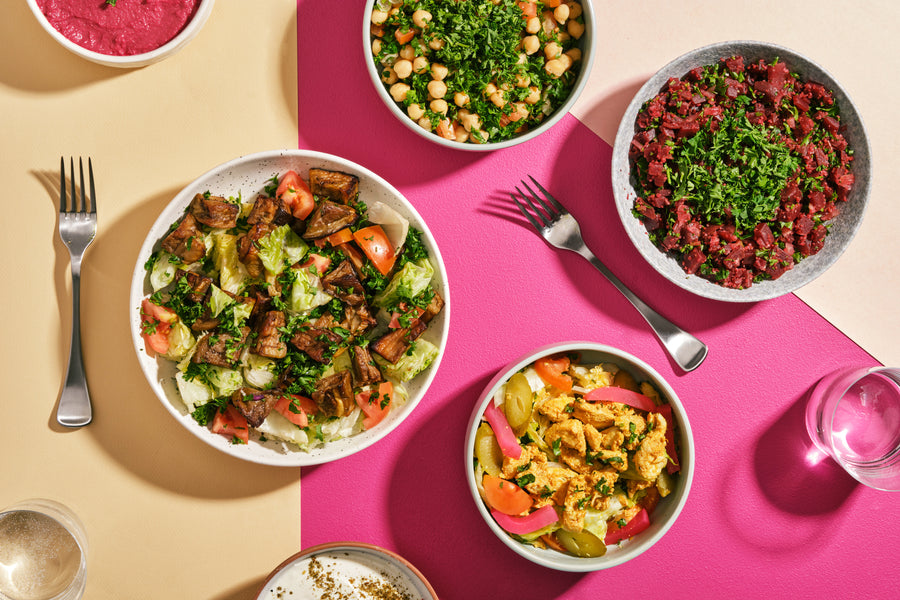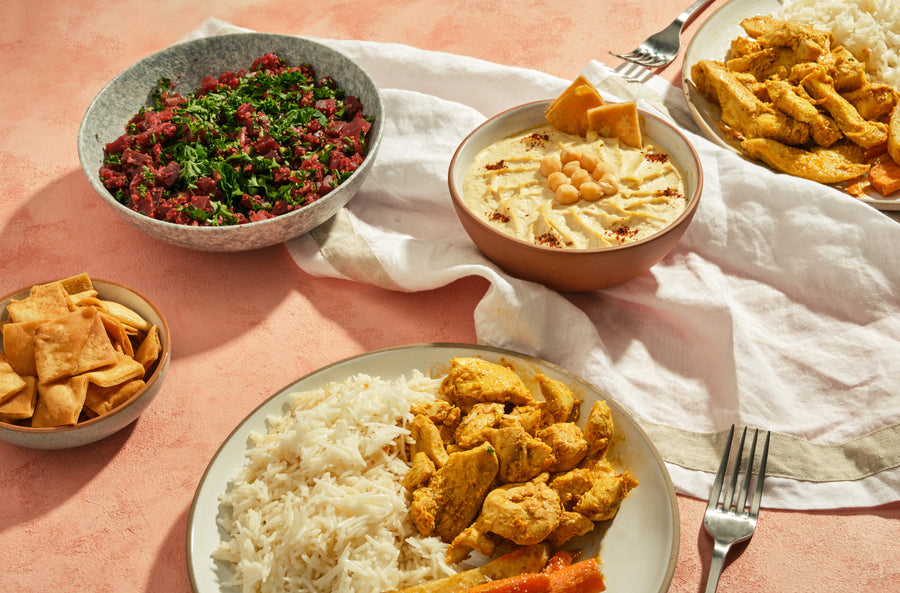Everything about the Rich Flavors and Traditions of Syrian Cuisine: A Culinary Journey
Syrian cuisine uses an unique blend of flavors and traditions that reflect its abundant cultural history. With staple ingredients like olive oil and garlic, along with a variety of flavors, the meals are both varied and welcoming. From the intricate preparation of kibbeh to the pleasant attraction of baklava, each facet of this culinary landscape discloses deeper stories. As one discovers the significance of these tastes, a higher understanding of public dining and party emerges.
The Significance of Syrian Active Ingredients
The essence of Syrian active ingredients exists in their rich variety and deep-rooted social relevance. Influenced by the nation's different location and background, Syrian food integrates a large array of spices, natural herbs, and fresh fruit and vegetables. Staples such as olive oil, garlic, and lemon provide a structure, while spices like coriander, cumin, and sumac add deepness and intricacy to dishes.The use fresh natural herbs, including parsley and mint, highlights the value of seasonal components. Furthermore, the area's fertile dirt yields a wealth of fruits and veggies, such as eggplants, tomatoes, and pomegranates, which are essential to numerous recipes. Grains like bulgur and rice develop the base of several meals, emphasizing the value of these active ingredients in Syrian society. This blend of flavors mirrors not just a culinary custom but also a tapestry of historical influences, making Syrian ingredients important to recognizing its food's lively character.

Iconic Cuisines of Syrian Food
Syrian cuisine is renowned for its iconic dishes that showcase an abundant tapestry of textures and tastes. Standard meze plates provide a variety of tiny meals that entice the taste, while hearty main dishes provide gratifying centerpieces for meals (Afternoon Tea Vancouver). To finish the experience, a selection of mouth-watering desserts adds a wonderful note to the cooking journey
Typical Meze Plates

Hearty Key Courses
Hearty main dishes offer as the focal point of Syrian eating, showcasing a mix of tastes that reflect the nation's abundant cooking customs. Meals such as kebab hindi, featuring marinaded lamb skewers, and the popular mujaddara, a calming combination of lentils and rice, highlight the usage of fresh components and fragrant flavors. One more staple is the iconic kibbeh, made from bulgur wheat and minced meat, commonly served in numerous kinds, consisting of baked, fried, or raw. Additionally, the flavors of the land come to life in meals like packed veggies, referred to as mahshi, which are full of rice, meat, and natural herbs. These primary courses not only satisfy appetite but also inform stories of household celebrations and cultural heritage.
Mouth-watering Treats Option
A fascinating variety of treats defines the wonderful side of Syrian food, using an alluring end to any meal. Among one of the most celebrated confections are baklava, delicate layers of phyllo pastry full of nuts and soaked in syrup, and maamoul, shortbread-like cookies commonly stuffed with days or nuts. Knafeh, a rich treat made from slim noodle-like bread saturated in syrup and layered with cheese, is a prominent selection, specifically during festive events. In addition, the sweet and aromatic rice pudding, recognized as roz bil laban, provides a soothing finish. These mouth-watering treats not only display the region's cooking proficiency but likewise mirror the social heritage of Syria, making them cherished deals with in both homes and restaurants alike.
Traditional Cooking Strategies
Although modern-day eases have affected many culinary practices, conventional food preparation strategies remain important to Syrian cuisine. These methods typically emphasize using fresh, seasonal active ingredients and concentrate on slow-moving food preparation to develop rich tastes. Methods such as cooking, braising, and cooking are widespread, permitting the all-natural preferences of the ingredients to radiate through.One significant strategy is the preparation of kibbeh, a meal made from finely ground meat and bulgur. It needs skilled hand-rolling right into various shapes and can be baked, deep-fried, or offered raw. In addition, the art of making bread, particularly pita, is main to numerous meals, commonly cooked in a traditional stone oven.Preservation approaches like pickling and fermenting additionally play an important duty, enhancing the diversity of tastes located in Syrian recipes. These strategies not just reflect the area's farming heritage but also cultivate a strong feeling of area with shared cooking practices.

The Function of Spices in Flavoring
Flavors function as the heartbeat of Syrian cuisine, infusing meals with complex tastes and aromatic depth. Each seasoning plays a crucial duty, adding not just to taste yet likewise to the social heritage of the region. Generally made use of flavors include coriander, sumac, and cumin, each offering an one-of-a-kind profile that raises standard dishes. As an example, cumin provides heat and earthiness, while sumac includes a tangy brightness, improving the total dish.Syrian chefs frequently blend flavors to produce unified profiles, showing the elaborate equilibrium of tastes that specify the cuisine. Making use of flavors is not merely for seasoning; it also offers to protect food and enhance its nutritional value. This thoughtful unification highlights a deep understanding of the culinary arts, where seasonings come to be vital storytellers, sharing the rich background and diverse influences that define Syrian gastronomy. Ultimately, flavors are important in crafting memorable and genuine Syrian meals.
Celebratory Dishes and Joyful Personalizeds
Commemorative dishes in Syrian cuisine are marked by standard feast meals that reflect the nation's rich cooking heritage. Unique celebrations commonly include unique routines that improve the public experience of dining. These custom-mades not just honor the value of the occasions yet additionally strengthen social and domestic bonds.
Traditional Feast Dishes
When families gather to commemorate substantial occasions in Syria, standard feast dishes take facility phase, showcasing the abundant culinary heritage of the area. These celebrations often include lively platters of mezze, consisting of hummus, baba ghanoush, and tabbouleh, which act as delightful starters. The main dish normally highlights lamb or hen, marinaded and prepared to excellence, usually come with by fragrant rice pilaf or bulgur. Among one of the most beloved recipes is maqlooba, a split rice meal with vegetables and meat, turned inverted before serving. Sweets additionally play a critical function, with baklava and knafeh providing next a wonderful surface to the meal. Each meal not just delights the taste however additionally reflects the deep-rooted practices and public spirit of Syrian society.
Unique Occasion Rituals
Special events in Syria are noted by rich rituals that intertwine food and celebration, mirroring find more info the social importance of communal events. Commemorative dishes usually consist of typical meals such as kibbeh, tabbouleh, and various grilled meats, prepared with treatment and shared amongst family members and buddies. During spiritual holidays like Eid al-Fitr and Eid al-Adha, families integrated to prepare unique desserts like maamoul, signifying unity and joy. Wedding events are particularly intricate, including several courses and lively screens of friendliness. These occasions are not merely regarding food; they incorporate songs, storytelling, and dancing, reinforcing social bonds and cultural heritage. With these routines, Syrians celebrate life's turning points, making certain practices are passed down through generations, enhancing their cooking landscape.
The Significance of Sharing and Community
Sharing meals is a basic aspect of Syrian culture, mirroring the deep-rooted worths of area and connection. In Syria, food is not just nourishment however a means of bringing individuals together. Friends and families collect around the table to take pleasure in typical dishes, cultivating bonds and developing enduring memories. This public eating experience stresses hospitality, where hosts go to wonderful lengths to guarantee every guest feels welcomed and nourished.The act of sharing food also symbolizes kindness and solidarity, strengthening social ties within neighborhoods and bigger communities. During gatherings, it is typical for individuals to serve each other, showcasing a spirit of togetherness that transcends individualism. Celebrations, whether little or huge, are often marked by the sharing of dishes, where diverse flavors and recipes come together, mirroring the rich tapestry of Syrian society. Accordingly, the significance of sharing and area in Syrian cuisine is not just a cooking custom yet a critical social technique.
A Culinary Expedition of Syrian Sugary Foods
Although often eclipsed by mouthwatering recipes, Syrian sweets hold a cherished place in the country's culinary heritage. These confections reflect the area's abundant history, mixing tastes and techniques from different societies. Conventional desserts like baklava, with its layers of phyllo bread, nuts, and honey syrup, showcase the artistry associated with Syrian cooking. Ma'amoul, a shortbread-like cookie filled up with days or nuts, is commonly prepared for cheery occasions, signifying friendliness and celebration.Another beloved sweet is Knafeh, a pastry saturated in syrup and split with cheese or lotion, providing a wonderful contrast of textures. Syrians additionally appreciate a selection of fruit syrups and preserves, usually served with tea or as component of a larger spread throughout celebrations. These sugary foods not only please the taste buds however also function as a bridge between generations, preserving the practices and tales of Syrian society through each scrumptious bite
Regularly Asked Inquiries
What Are the Health Advantages of Traditional Syrian Foods?
The wellness benefits of conventional Syrian foods consist of rich nutrients from fresh vegetables, beans, and whole grains. These active ingredients advertise heart health and wellness, boost digestion, and give essential vitamins, adding to overall health and a balanced diet plan.
Just How Has Syrian Food Advanced For Many Years?
Syrian food has progressed substantially, influenced by historic profession routes, social exchanges, and local availability of components. Typical dishes have integrated modern-day flavors and methods while keeping their rich heritage, showing a varied cooking landscape.
Are There Vegetarian or Vegan Options in Syrian Cuisine?
Syrian cuisine offers many vegan and vegan choices, including recipes like falafel, tabbouleh, and stuffed grape leaves. These dishes highlight the region's rich agricultural heritage, showcasing fresh vegetables, grains, and fragrant seasonings published here in dynamic mixes.
What Beverages Set Well With Syrian Dishes?
When thinking about drinks that enhance Syrian dishes, one may locate that mint ayran, pomegranate, and tea juice improve the meal's flavors. In addition, red white wine often sets well with the flavors typically found in these cuisines.
How Can I Recreate Syrian Meals in the house?
To recreate Syrian meals at home, one ought to explore authentic dishes, collect typical active ingredients, and use food preparation methods one-of-a-kind to the food. Trying out flavors and presentation likewise improves the total dining experience. Syrian cuisine is renowned for its famous recipes that showcase a rich tapestry of appearances and tastes. Flavors offer as the heartbeat of Syrian cuisine, infusing meals with complex tastes and fragrant deepness. Commemorative meals in Syrian cuisine are marked by conventional feast dishes that mirror the nation's rich cooking heritage. Events, whether little or huge, are frequently marked by the sharing of meals, where diverse tastes and recipes come together, mirroring the rich tapestry of Syrian society. Syrian food offers numerous vegetarian and vegan choices, featuring meals like falafel, tabbouleh, and packed grape leaves.